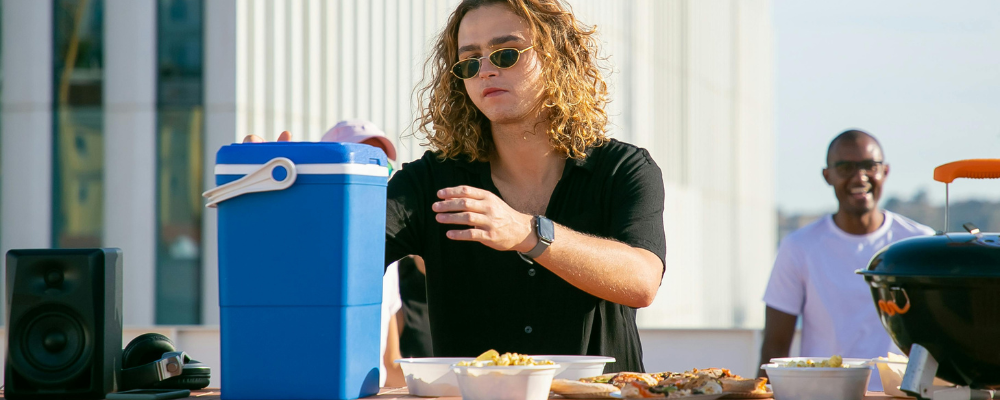
Tips for Cooler Food Safety
— By Alex Bosse, Nutrition Education Professional for UMaine Cooperative Extension EFNEP (Expanded Food & Nutrition Education Program).
Summer is here and cookout, barbecue, and tailgating season is in full swing. Chances are that you, friends, or family will be using a cooler for your outdoor summer adventures. To avoid getting sick from food-borne illness, below are some good practices and tips to consider for cooler food safety.
Temperature Safety
- Use ice, ice packs, or gel packs to fully fill all empty spaces within a cooler. Use a cooler that is well insulated and not too small or large. A large cooler that is packed with small amounts of food leaves room for more air space, making it more difficult to maintain proper temperatures inside the cooler.
- To keep foods safe, temperatures within a cooler should be 41° F or lower. Bacteria grows rapidly when it is in the temperature danger zone (between 41° F and 140°F) for too long. Foods that need refrigeration or heating should not be held in the temperature danger zone for longer than 2 hours.
- Use a thermometer to ensure cooler temperatures are below 41° F. To adequately check cooler temperatures, place the thermometer in the warmest part of the cooler, usually near the top of the cooler under the lid.
- If outdoor temperatures are above 90°F, return perishable foods to cooler within 1 hour. If outdoor temperatures are below 90°F, return perishable food to cooler within 2 hours. As the old adage goes, “when in doubt, throw it out.” If food stays out for too long, or you are unsure of whether or not it is safe, discard it.
How to Pack Cooler
- Pack beverages separate from perishable foods to avoid cross contamination. Having a separate cooler for beverages and perishable foods is advised.
- Raw meat, poultry, and seafood should be kept separate from other foods such as ready-to-eat foods and ideally at the bottom of the cooler in thoroughly sealed containers or tightly zipped bags. This ensures juices do not drip onto other foods.
- Use tightly sealed bags and containers to store food in cooler. Bags and containers that are not properly sealed can leak contents onto other foods and come into contact with melted water.
Other Tips to Consider
- Pack your cooler immediately before leaving for your destination.
- Keep the cooler lid open as little as possible, and keep cooler in a shaded area such as under a table, tree, or umbrella. For beach trips, try keeping the cooler partially buried in sand to keep it cool.
- Do not use ice from the cooler to add to beverages, as this is cross contamination.
- Last but not least, regularly wash and sanitize coolers. Coolers should be washed and sanitized before and after each trip. Wash coolers with soap and warm water, and sanitize with a bleach solution to reduce exposure to harmful bacteria and mold. Store coolers in an area that is dry, clean, and away from direct sunlight.
Resources
- Bulletin #4278, Barbecue and Tailgating Food Safety (UMaine Extension)
- Bulletin #4279, Food Safety for Camping and Hiking (UMaine Extension)
- How to Keep Food Safe in a Cooler (Mississippi State Extension)
- Beverage and Food Cooler Safety (Michigan State Extension)
- Check Your Steps! Chill: How to Pack a Cooler to Prevent Food Poisoning (USDA)
